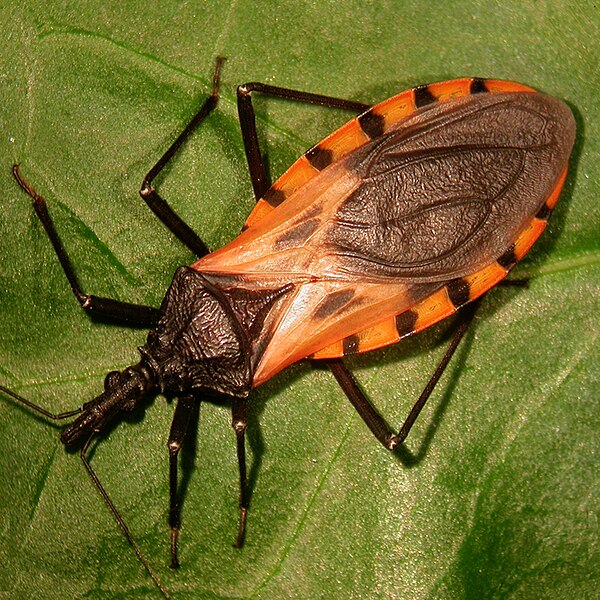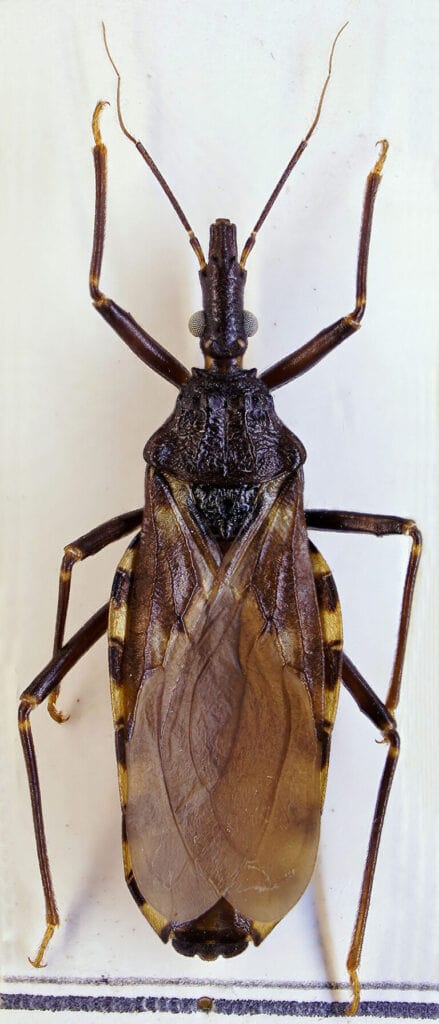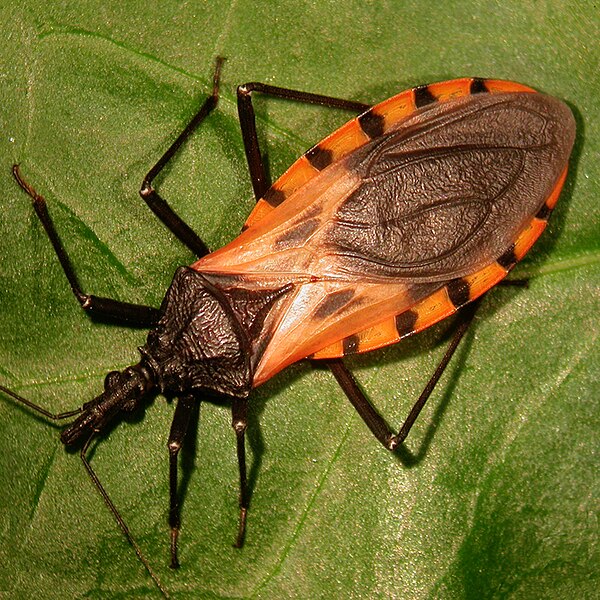Emiliana Rodriguez remembers spending sleepless nights watching friends play soccer. The game was still going on when one of the players passed away.
Rodrguez, a native of Bolivia, had no idea what had happened, so she began to fear the night because she had been told that the “monster” known as Chagas only appeared at night.
One of the 12,000 people who die annually from Chagas, a particular type of monster known as a “silent and silenced disease” spread by nocturnal insects and affecting up to 8 million people annually, was Rodrguez’s acquaintance.

Despite moving from Bolivia to Barcelona 27 years ago, Emiliana Rodrguez, 42, still has Chagas disease, which she refers to as a “monster.”.
“The terror often struck at night. I occasionally didn’t sleep, she admitted. “I was concerned I might nod off and not wake up. ”.
Rodriguez learned she was a Chagas disease carrier eight years ago when she was expecting her first child.
She continued, “I was paralyzed with shock and remembered all the stories my ancestors told me about people suddenly dying. I can’t even begin to describe how I felt when I heard about my friend’s passing. What was going to happen to my baby? I wondered.
However, Rodriguez took medication to stop the parasite from infecting her unborn child through the placenta. Her infant daughter’s test result was unfavorable.
Elvira Idalia Hernández Cuevas, a Mexican mother of an 18-year-old, had never heard of Chagas before her daughter was identified as having the silent killer.
Idalia, a Mexican teen, was donating blood in her neighborhood near Veracruz when she became infected with Chagas disease. Triatomine bugs, also called kissing or vampire bugs because they feed on human blood, are the carriers of the chagas disease.
Hernández stated, “I had never heard of Chagas, so I started to research it on the internet,” in an interview with the Guardian. “I was horrified to learn that it was a silent killer. I didn’t know what to do or where to go.
She is not alone in this; many people are not aware that these pesky insects could potentially transmit disease.
Carlos Ribeiro Justiniano Chagas, a physician and researcher from Brazil, discovered the first case of Chagas disease in a human being in 1909.
Geographically, the Chagas disease has spread to the Americas, Europe, Asia, and Oceania in recent years.
When people are asleep at night, kissing bugs emerge from hiding in low-income homes in rural or suburban areas.
When a sick bug bites a person or animal and then urinates on the skin, the likelihood that the victim will scratch the area rises, increasing the possibility that the feces will enter the body through skin cuts or open sores.
According to the World Health Organization (WHO), there are 6 to 7 million cases of Chagas disease worldwide, the majority of which go undiagnosed.
These individuals are based in Mexico, Central America, and South America.

The fatal infection might remain untreated for the rest of one’s life. According to the Guardian, Chagas kills more people in Latin America each year—more than any other parasitic disease, including malaria.
Although nearly 300,000 Americans have been infected with these bugs, the problem is not widespread.
The CDC states that even among people who never exhibit any symptoms, 20 to 30 percent may experience heart problems or gastrointestinal issues that may prove fatal decades after the initial infection.
Treatment and prevention are more difficult due to the low diagnosis rate of just 10% worldwide.
Hernández and her daughter Idalia sought help from several doctors, but none of them had any knowledge of Chagas disease or how to treat it.
“I was astounded, terrified, and devastated because I thought my child would die. I was particularly concerned because I couldn’t find any reliable information, Hernández said.
Idalia received the assistance she required after getting in touch with a family member who works in healthcare.
According to Hernández, “the authorities in Mexico say there aren’t many Chagas patients and that the disease is under control, but that’s not the case.”. “Medical staff members lack training and conflate Chagas with other cardiac conditions. Chagas is present in Mexico, but most people are not aware of it.
According to global health policy, the Chagas disease is a neglected tropical disease, according to the World Health Organization (WHO).
Chagas disease treatment.
According to Colin Forsyth, a research manager at the Drugs for Ignored Diseases Initiative (DNDi), Chagas is undertreated in part because “it’s a silent disease that stays hidden for so long in your body… because of the asymptomatic nature of the initial part of the infection.”.
The impacted simply lack the ability to affect healthcare policy, Forsyth continued. ” in response to his earlier remark. Due to the convergent nature of biological and social issues, it is kept a secret.
Chagas disease can be passed from mother to child during pregnancy or childbirth, as well as through blood transfusions and organ transplants, it has recently been discovered as the disease spreads to other continents.
Professor David Moore, a doctor at the Hospital for Tropical Diseases in London, founded the Chagas Hub with the aim of “more people being tested and treated, and to manage the risk of transmission, which in the UK is from mother to child,” he added.
Moore said, “I can’t imagine that we’ll be anywhere close by 2030,” in reference to the WHO target of eradicating the disease. The rate of eradication of Chagas disease is “glacial. That is incredibly improbable.
The treatments for Chagas disease that have been around for 50 years or more, according to Moore, are “toxic, unpleasant, and not very effective. There are two of these drugs: benznidazole and nifurtimox.
In adults, the same drugs may be able to slow or stop the condition, but this is not always the case in newborns.
An allergic rash, dizziness, and nausea were Rodriguez’s three worst symptoms. She no longer needs therapy and only requires yearly checkups now.
Moore argues that more effective treatments are required to halt the spread of Chagas disease, but pharmaceutical companies do not currently see a financial benefit in developing such drugs.
As president of the International Federation of Associations of People Affected by the Chagas Sickness (FINDECHAGAS), Hernández wants to spread knowledge about the condition so that more treatments can be created.
If I believe I have found a triatomine bug, what should I do?
Rodriguez is currently in Spain working with the Barcelona Institute for Global Health to raise awareness of Chagas disease in order to stop this “monster.”.
I’m starting to feel the silence, says Rodriguez. “I want people to talk about and be aware of Chagas. Everyone should be examined and treated, in my opinion.
Additionally, they have an audience.
In honor of the day in 1909 when Carlos found the first case of the disease in a human, the World Health Organization declared April 14 as World Chagas Disease Day.
The World Health Organization (WHO) states that there are “global targets and milestones set for 2030 to prevent, control, eradicate and eradicate a diverse set of 20 diseases and disease groups.”. Chagas is included as well.
The Centers for Disease Control and Prevention advise the following actions to stop an infestation:.
Fill in any gaps that exist between the walls, doors, floor, and other surfaces.
Clean up any trash that may have accumulated around your property.
Use damaged window and door screens after mending them.
The home’s exterior, basement, attic, and other areas should all have secure entrances.
In particular at night, let animals sleep inside.
Keep your home and any outdoor areas where your pet spends time clean and regularly inspect for pests.
The Centers for Disease Control and Prevention advise against killing kissing bugs if you find them.
A container filled with rubbing alcohol and freezing the bug in water are both preferable alternatives.
After being removed from its container, the insect should be taken to a university lab or a medical facility for identification.
It’s unsettling to think that these insects reside inside our walls; it makes you think of stories you heard as a child about “monsters in the walls.”. ”.
We hope that the WHO keeps its promise to eradicate Chagas and other neglected tropical diseases.



